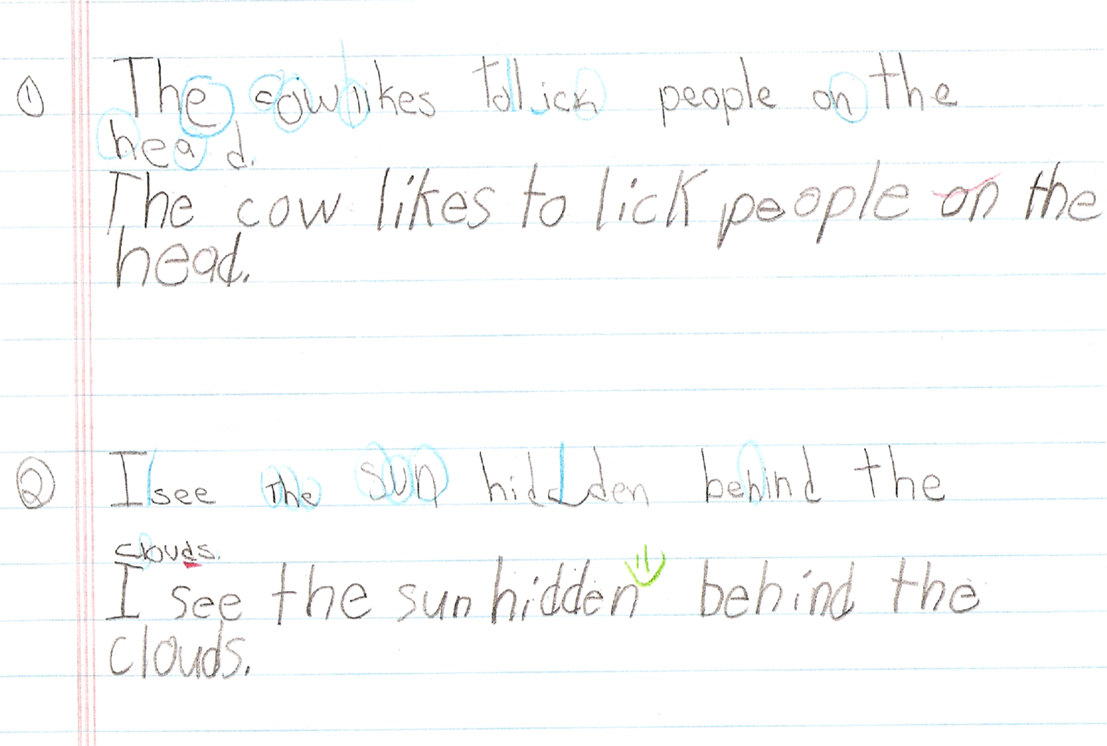Written By: Karin H. Warner, MOT OTR/l
 Let’s face it, handwriting is not what it used to be. The perception of having perfect handwriting, and what it may mean if your handwriting is sloppy, has changed. So maybe it is a good thing that handwriting is not what it used to be. The general consensus is that there is a decreased expectation of students’ handwriting quality. This means students who struggle with handwriting can now work towards their best, rather than trying to achieve an unobtainable expectation of the ideal handwriting.
Let’s face it, handwriting is not what it used to be. The perception of having perfect handwriting, and what it may mean if your handwriting is sloppy, has changed. So maybe it is a good thing that handwriting is not what it used to be. The general consensus is that there is a decreased expectation of students’ handwriting quality. This means students who struggle with handwriting can now work towards their best, rather than trying to achieve an unobtainable expectation of the ideal handwriting.
I feel like the pressure is off and we can help the students find the handwriting quality that works for them. Everyone’s handwriting is different and we should embrace that. That is the amazing thing about handwriting. How your handwriting looks speaks about you and who you are. Our job is to guide this skill and help the student’s handwriting become as legible as possible. We certainly do not need to make it perfect or hyper-focus on how 1 letter is formed. Allow the student to have their unique handwriting attributes.
Even with the decreased pressure on handwriting quality the children that occupational therapists work with, can be very sensitive about their work. Some children may notice their work is not like their peers. When provided with positive feedback, such as highlighting all the good aspects of their handwriting (i.e. “I like how these letters are on the line”), some children may notice the handwriting aspects that were not identified. For these children, we not only need to help them with their handwriting, but also build their sense of self. Help them to look at the good in themselves and the good in their handwriting.
We can help build up the children’s handwriting skills and their sense of self, by working on handwriting sequentially and providing them with concrete strategies. By doing this, we can help the child focus on the good parts of their handwriting and build on their strengths.
 The important elements of handwriting intervention are:
The important elements of handwriting intervention are:
- Working directly on handwriting has been proven to be the best method to improve handwriting skills.
- Providing sequential instructions, in which there is a beginning, middle and end to handwriting instruction, helps to progress handwriting skills.
- Teach the child to self-evaluate their handwriting, this empowers the student and gives them the skills to progress their own handwriting.
- Integrate cognitive strategies.
- Work with the child’s strengths.
Handwriting should not be a traumatic experience! For some students, when they start to write, they tense up, avoid the task, and/or become frustrated. These are signs they had a negative history with handwriting. Our job is to build their sense of self as a handwriter. The physical nature of handwriting is a way for students to demonstrate a piece of themselves. It also provides them with visual and physical feedback of their abilities. This opens them up to self criticism (i.e. I am not as good as my friends) or criticism from others. Guiding children with a positive environment and feedback about their strengths will help children discover their handwriting skills. To learn more about how to build children’s self esteem as a handwriter join my May webinar, Solving the Handwriting Puzzle.
Explore online continuing education courses from Karin below:
References:
Weintraub, N. (2019) Literacy: handwriting and written expression to enhance participation. AOTA Continuing Education. (49).
Skubik-Peplaski,C., Hight,J., Bray,L. Rushing-Carr,C.; What Improves Handwriting: Occupation-Based or Handwriting Interventions?. Am J Occup Ther August 2021, Vol. 75(Supplement_2), 7512515348p1. doi: https://doi.org/10.5014/ajot.2021.75S2-RP348
